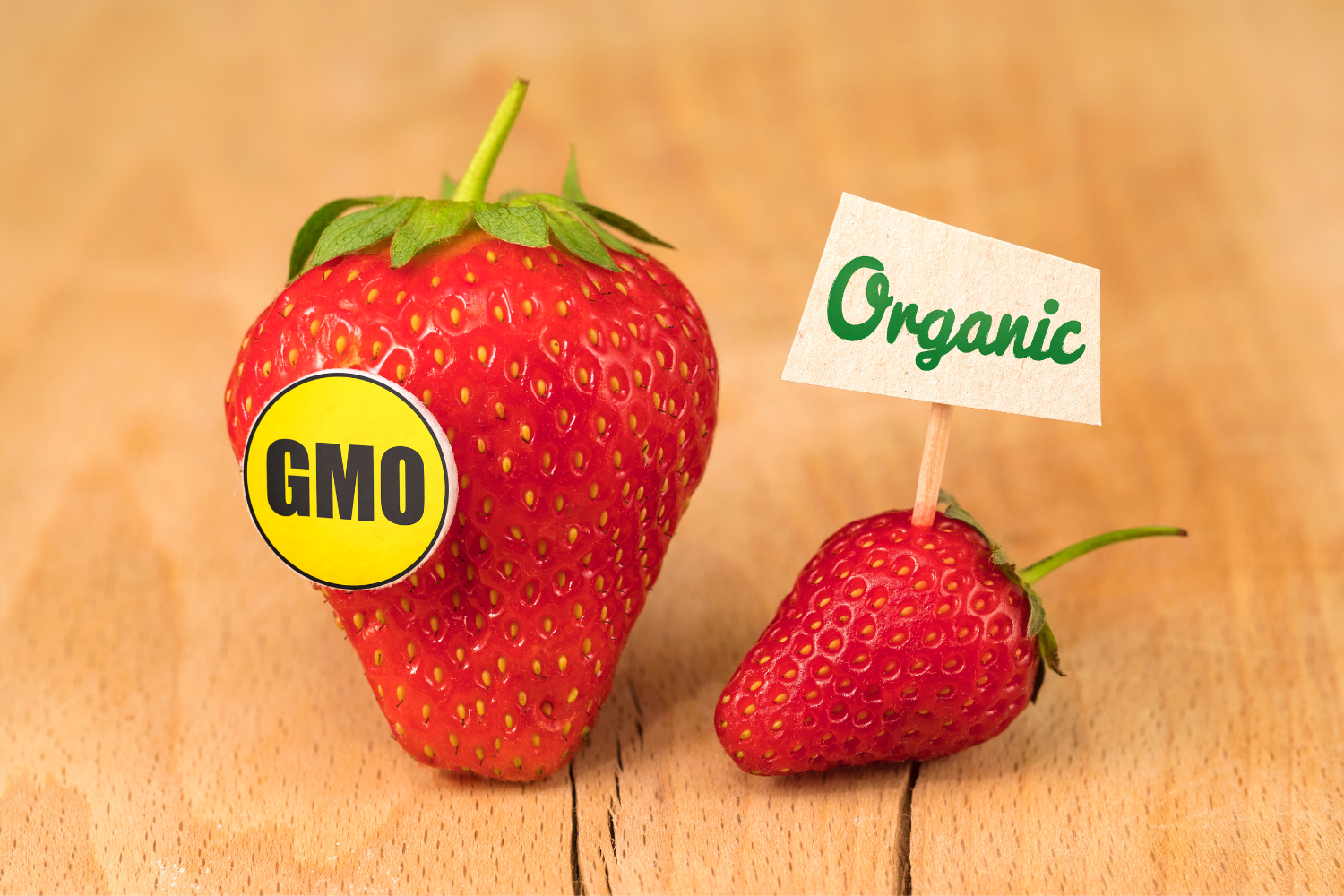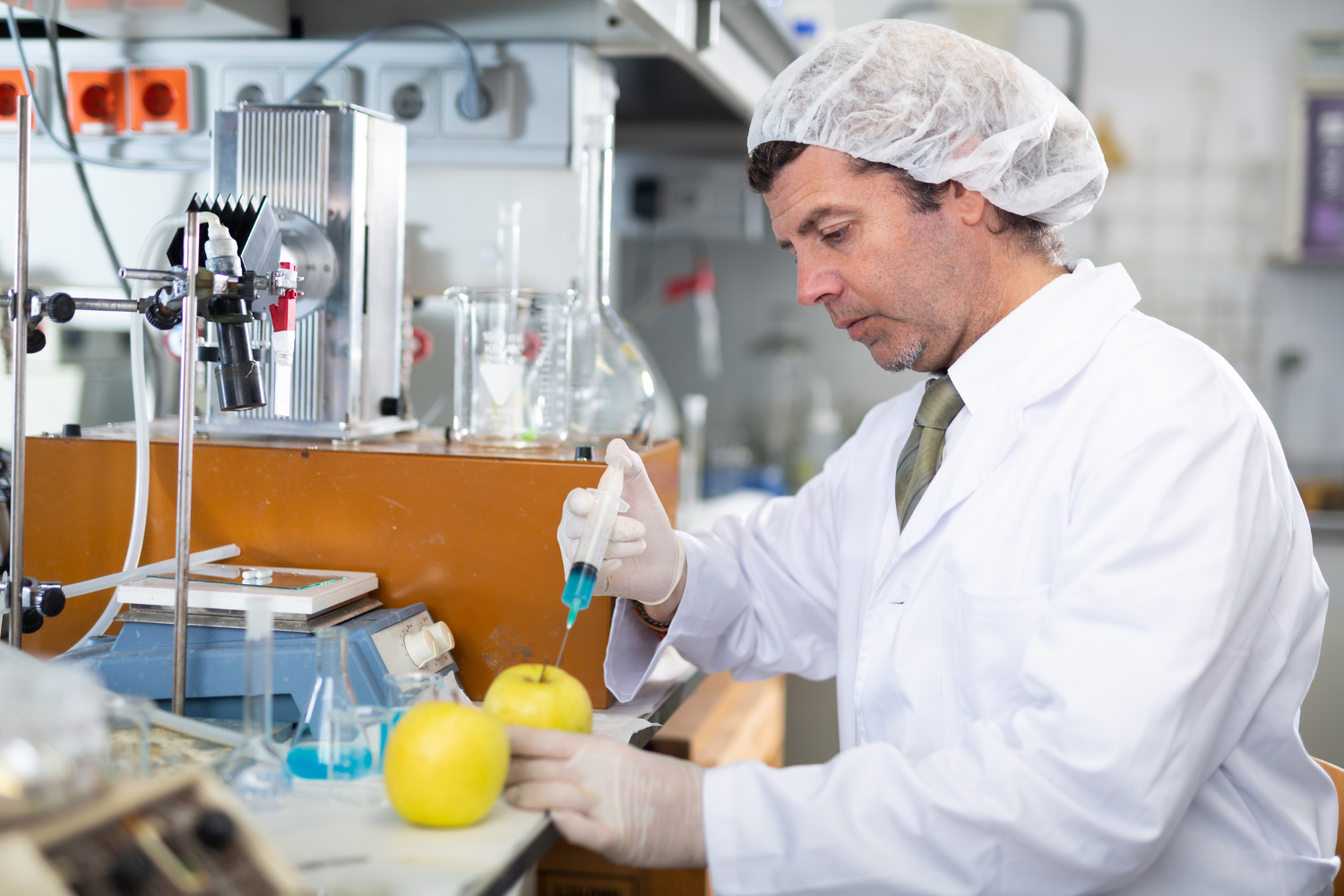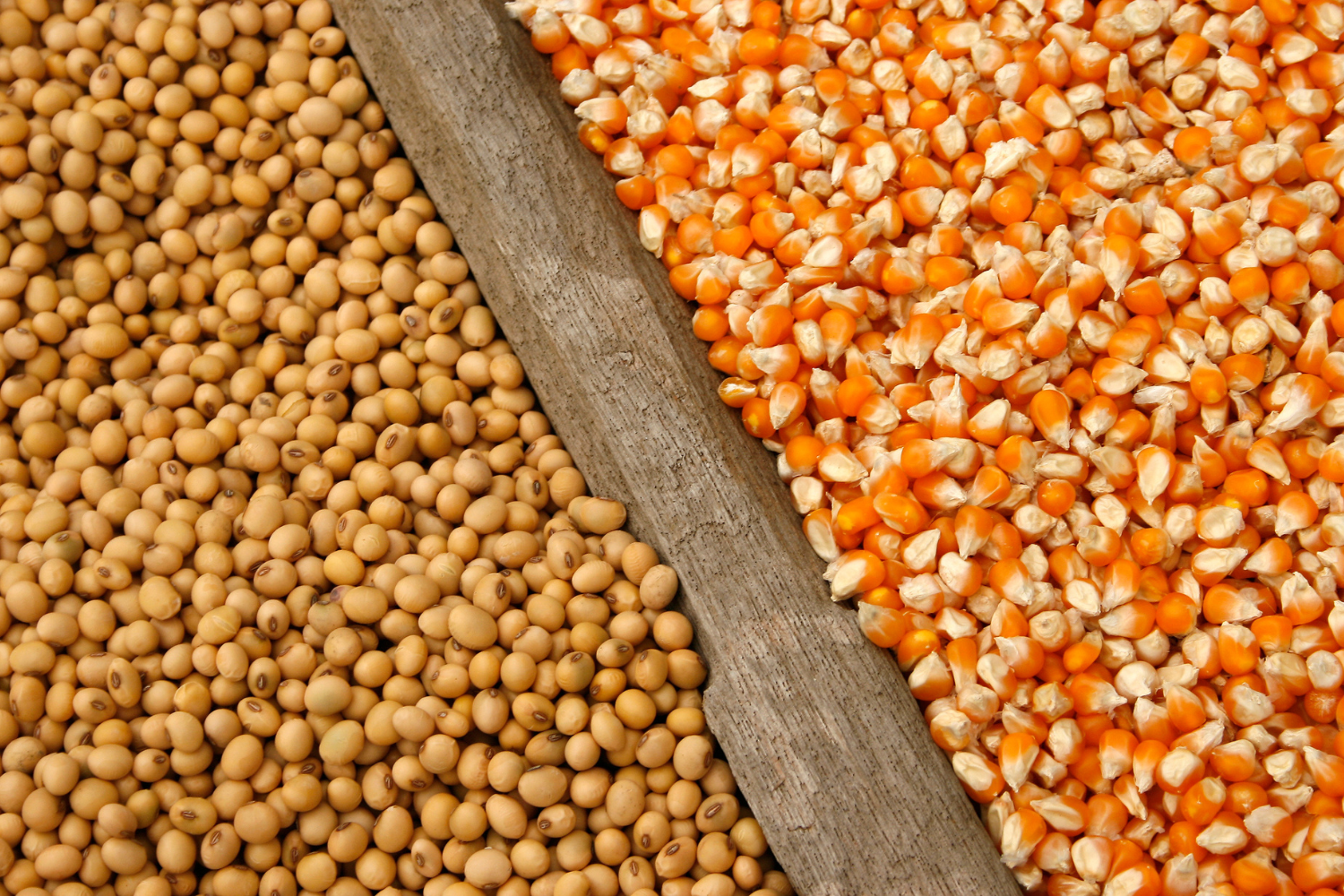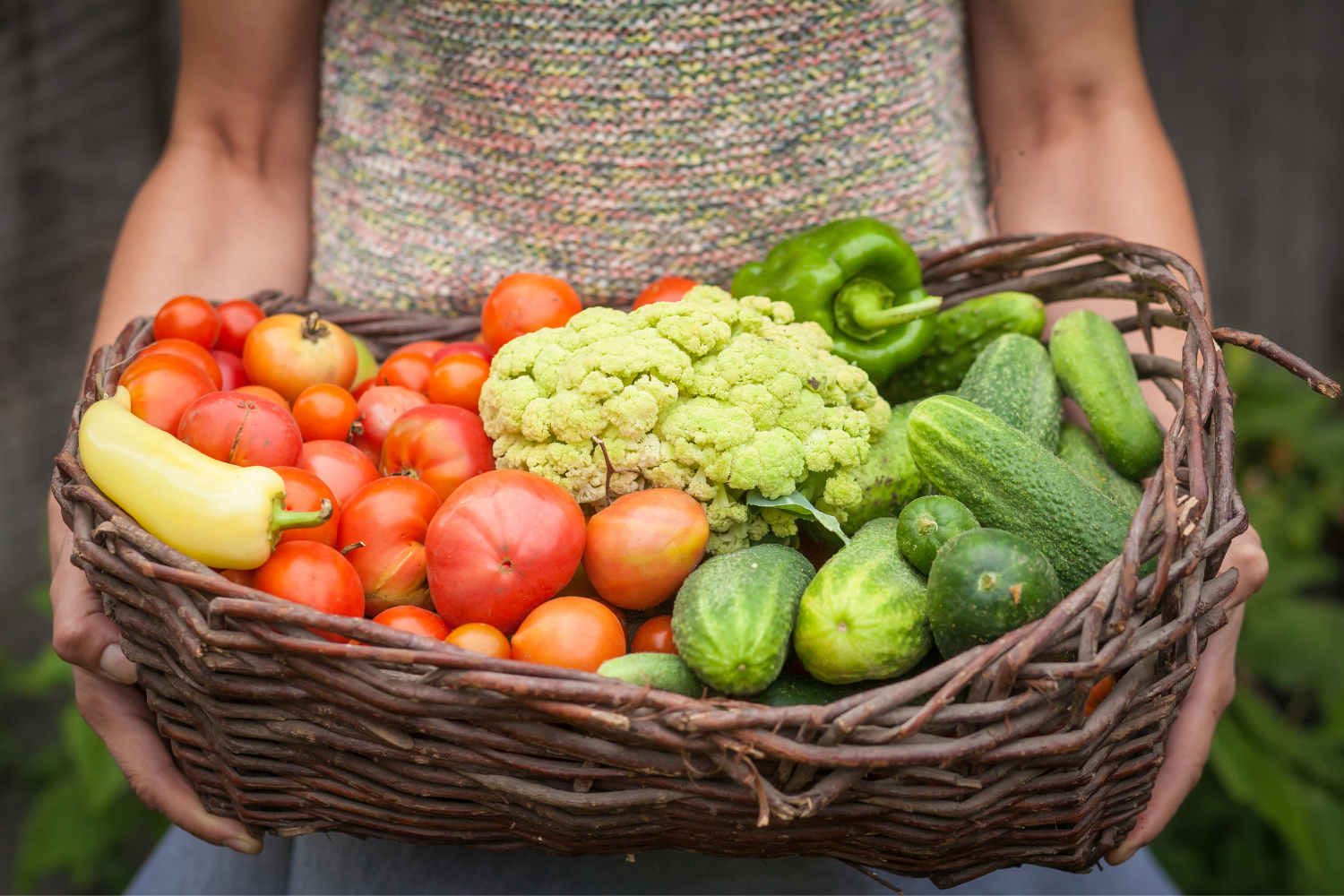Understanding the distinction between GMO (genetically modified organisms) and non-GMO products is crucial for consumers and businesses in the food and supplement industries. GMOs are created using genetic engineering techniques to introduce new traits into crops, such as herbicide tolerance or resistance to pests, by incorporating foreign DNA.
On the other hand, non-GMO products are free from genetic modification and often carry certifications such as the Non-GMO Project Verified label. This difference is significant because it impacts consumer preferences, agricultural practices, and sustainability goals. With growing awareness around genetically engineered crops, organic foods, and foods labeled non-GMO, businesses must navigate these choices to meet market demands.

Table of Contents
ToggleWhat is a GMO?
A GMO, or genetically modified organism, is an organism whose DNA has been altered using genetic engineering techniques. These changes involve introducing foreign DNA or modifying existing genetic material to create new organisms with desirable traits.
Genetic modification is often used to achieve desirable traits in crops, such as pest resistance, herbicide tolerance, or faster growth. For example, genetically modified crops like Bt corn are engineered to produce a protein from Bacillus thuringiensis, which protects the plant from pests.

Common Uses of GMOs
Genetically modified crops are widely used in agriculture to increase yield and reduce the need for chemical pesticides. Examples include:
- Corn and soybeans: Modified to resist pests and tolerate herbicides.
- Cotton: Engineered for pest resistance to minimize crop loss.
- Crops produced with CRISPR techniques: Designed for improved resilience and efficiency.
Genetically modified ingredients, such as GMO soy or corn, are often found in processed foods and dietary supplements. These ingredients may enhance the nutritional profile or improve shelf life.

Why GMOs Are Controversial
GMOs have sparked debates about potential health risks. While organizations like the Department of Agriculture (USDA) and the European Union consider genetically modified foods safe for human consumption, some consumers worry about long-term effects. Certain herbicide-tolerant GMOs are associated with increased herbicide use, while pest-resistant GMOs like Bt crops can reduce pesticide applications.
There is concern that genetically modified crops may cross-breed with wild plants, potentially reducing biodiversity. Gene drives alter genetic material in entire populations, and herbicide-resistant GMOs can disrupt ecosystems, sparking debates about sustainability.
What is Non-GMO?
Non-GMO products are those that are not altered through genetic engineering techniques. These products rely on traditional breeding methods, avoiding genetic modification or the introduction of foreign DNA.
Consumers seeking natural or minimally processed foods value products labeled non-GMO. Organic farms often produce non-GMO crops, which are not bioengineered and adhere to strict regulations.

Non-GMO Foods and Products
Examples of non-GMO products include:
- Organic fruits and vegetables, grown without genetic modification.
- Whole grains, such as non-GMO oats and quinoa.
- Organic foods with the USDA organic label, which ensures non-GMO production.
Certifications like the Non-GMO Project Verified label assure consumers that products contain no genetically modified ingredients. This gold standard helps businesses meet the demand for sustainable, non-GMO options.

Differences Between GMO and Non-GMO
The key difference between GMO and non-GMO products lies in how they are produced. While GMOs involve genetic engineering to create specific traits, non-GMO foods come from traditional breeding methods without lab-based genetic modification.
Genetic Modification vs. Natural Breeding
How GMO and Non-GMO Are Created
GMO foods are created using genetic engineering techniques where scientists alter the DNA of crops by introducing foreign genes or modifying existing ones. These processes allow crops to gain traits like herbicide tolerance or pest resistance. For instance, genetically engineered seeds like Bt corn are designed to repel insects naturally.
Non-GMO products are developed through traditional breeding practices, such as hybridization, which do not involve genetic engineering. Farmers select crops with desirable traits over generations without genetic engineering or adding foreign DNA. This process takes longer but results in foods consumers associate with a more “natural” approach.
Health and Safety Perspectives
GMO Safety Research
The USDA and European Union have found no evidence that GMOs are unsafe for human consumption, though public concerns and debates persist. Many GMO crops, such as corn grown with genetic modifications, undergo strict regulations to ensure safety before entering the market.
Why People Choose Non-GMO
Consumers often prefer non-GMO products for various reasons, including concerns about the environmental impact of GMOs, pesticide use, and a desire for more natural foods. Non-GMO certifications and organic labels reassure buyers that their choices align with health and sustainability goals.
Benefits and Risks of GMOs
Genetically modified organisms offer advantages and potential risks that impact agriculture, health, and the environment.
<table border="1">
<thead>
<tr>
<th>Advantages</th>
<th>Potential Risks</th>
</tr>
</thead>
<tbody>
<tr>
<td>Increased crop yields reduce food scarcity.</td>
<td>Possible health concerns, like allergies.</td>
</tr>
<tr>
<td>Enhanced nutrition, such as vitamin-fortified crops.</td>
<td>Environmental risks, such as biodiversity loss.</td>
</tr>
<tr>
<td>Reduced pesticide use through pest-resistant crops.</td>
<td>Overuse of herbicides harming ecosystems.</td>
</tr>
<tr>
<td>Crops adapted to harsh climates or poor soils.</td>
<td>Cross-breeding of modified genes with wild plants.</td>
</tr>
</tbody>
</table>
Advantages of GMOs
Increased Crop Yields
GMOs help farmers produce more food with fewer resources. Genetically modified crops, like herbicide-tolerant soybeans and pest-resistant corn, reduce the need for chemical inputs and improve efficiency, supporting sustainable agriculture and higher yields.

Nutritional Enhancement
GMOs can be engineered to include additional nutrients. For example, Golden Rice is genetically modified to include vitamin A, intended to address deficiencies in regions where malnutrition is common, though its widespread impact is still being evaluated. These innovations showcase the potential of biotechnology to address global health challenges.
Potential Risks of GMOs
Health Concerns
Some individuals worry about the potential health risks of GMOs, including allergies or long-term effects that are not yet fully understood. While research generally supports GMO safety, the debate continues, and many consumers opt for non-GMO options as a precaution.
Environmental Impact
The use of genetically modified crops raises concerns about unintended environmental consequences. Modified genes can spread to wild plants, reducing biodiversity. Overuse of herbicides on herbicide-tolerant crops can harm ecosystems and increase carbon emissions. Sustainable practices are essential to managing these risks.
Benefits and Drawbacks of Non-GMO
Non-GMO products offer unique benefits but have specific challenges for consumers and producers.
<table border="1">
<thead>
<tr>
<th>Advantages</th>
<th>Potential Risks</th>
</tr>
</thead>
<tbody>
<tr>
<td>Perceived as more natural or organic.</td>
<td>Higher production and retail costs.</td>
</tr>
<tr>
<td>Often grown with fewer pesticides.</td>
<td>Lower yields due to pest and disease vulnerability.</td>
</tr>
<tr>
<td>Preferred by consumers avoiding GMOs.</td>
<td>Limited availability in some markets.</td>
</tr>
</tbody>
</table>
Benefits of Non-GMO Products
Natural and Organic Appeal
Non-GMO foods are often considered more natural and commonly associated with organic farming practices. Many consumers choose non-GMO products because they prefer foods that avoid genetic engineering and align with a more natural lifestyle.
Lower Pesticide Use
Organic farms growing non-GMO crops typically avoid synthetic pesticides, while conventional non-GMO crops may still use them. This practice supports environmental sustainability and appeals to consumers concerned about chemical exposure in their food.
Drawbacks of Non-GMO Products
Higher Cost
Non-GMO products typically cost more to produce due to stricter farming practices and the need for separate supply chains. These higher production costs result in increased prices for consumers, making non-GMO products less accessible for some.
Lower Yields
Without the pest and disease resistance found in genetically modified crops, non-GMO crops are more vulnerable to environmental challenges. This often leads to lower yields, making it harder for farmers to compete with GMO crop production.
How to Identify GMO and Non-GMO Products
Examining food labels and certifications can identify whether a product is GMO or non-GMO.
Labeling and Certification
Certifications like the Non-GMO Project Verified seal or USDA Organic label indicate that a product adheres to standards prohibiting the use of genetically modified ingredients.
Some foods may not carry explicit labels indicating GMO content. In such cases, products lacking certifications may still contain genetically modified ingredients, mainly processed foods made with corn, soy, or canola.

Countries with GMO Labeling Laws
Many countries, including those in the European Union, have mandatory GMO labeling laws, ensuring consumer transparency. In contrast, the United States only recently implemented labeling requirements for bioengineered food, and enforcement remains less comprehensive. This difference highlights the global variation in how GMO products are regulated and labeled.
GMO vs. Non-GMO – Making Informed Choices
Understanding the differences between GMO and non-GMO products is essential for consumers and businesses in the food and supplement industries. GMOs are genetically engineered for traits like pest resistance and higher yields, while non-GMO products rely on natural breeding methods and are often linked to organic farming.
Consumers may choose non-GMO for perceived health benefits, environmental concerns, or ethical reasons, while others value the efficiency and innovation of GMOs. Making informed decisions about GMO vs. non-GMO products allows individuals and businesses to align their choices with health, environmental, and sustainability goals.
Frequently Asked Questions
Are GMOs bad for your health?
Most scientific studies show that GMOs are safe to eat, but some consumers prefer to avoid them due to potential risks and personal beliefs.
How can I avoid GMO foods?
To avoid GMO foods, choose organic products, look for the Non-GMO Project Verified label, or purchase from local farmers who use non-GMO seeds.
Are organic foods always non-GMO?
Yes, certified organic foods are always non-GMO because organic farming standards prohibit the use of genetically modified organisms.
What are the most common GMO crops?
Common genetically modified crops include corn, soybeans, canola, and sugar beets, which are widely used in food production.
Why are GMOs controversial?
GMOs are controversial due to concerns about health risks, environmental impact, and ethical questions surrounding genetic modification.
References
- U.S. Department of Agriculture. (2024). EPA, FDA, and USDA Issue Joint Regulatory Plan for Biotechnology. https://www.usda.gov/media/press-releases/2024/05/08/epa-fda-and-usda-issue-joint-regulatory-plan-biotechnology
- U.S. Environmental Protection Agency. (2024). Genetically Modified Organisms | US EPA. https://www.epa.gov/regulation-biotechnology-under-tsca-and-fifra/genetically-modified-organisms
- U.S. Environmental Protection Agency. (2024). Regulation of Biotechnology under TSCA and FIFRA. https://www.epa.gov/regulation-biotechnology-under-tsca-and-fifra/regulation-genetically-engineered-microorganisms
- U.S. Food and Drug Administration. (2024). Agricultural Biotechnology. https://www.fda.gov/food/consumers/agricultural-biotechnology
- U.S. Food and Drug Administration. (2024). How GMOs Are Regulated in the United States. https://www.fda.gov/food/agricultural-biotechnology/how-gmos-are-regulated-united-states
- U.S. Food and Drug Administration. (2024). New Plant Variety Regulatory Information. https://www.fda.gov/food/food-new-plant-varieties/new-plant-variety-regulatory-information




